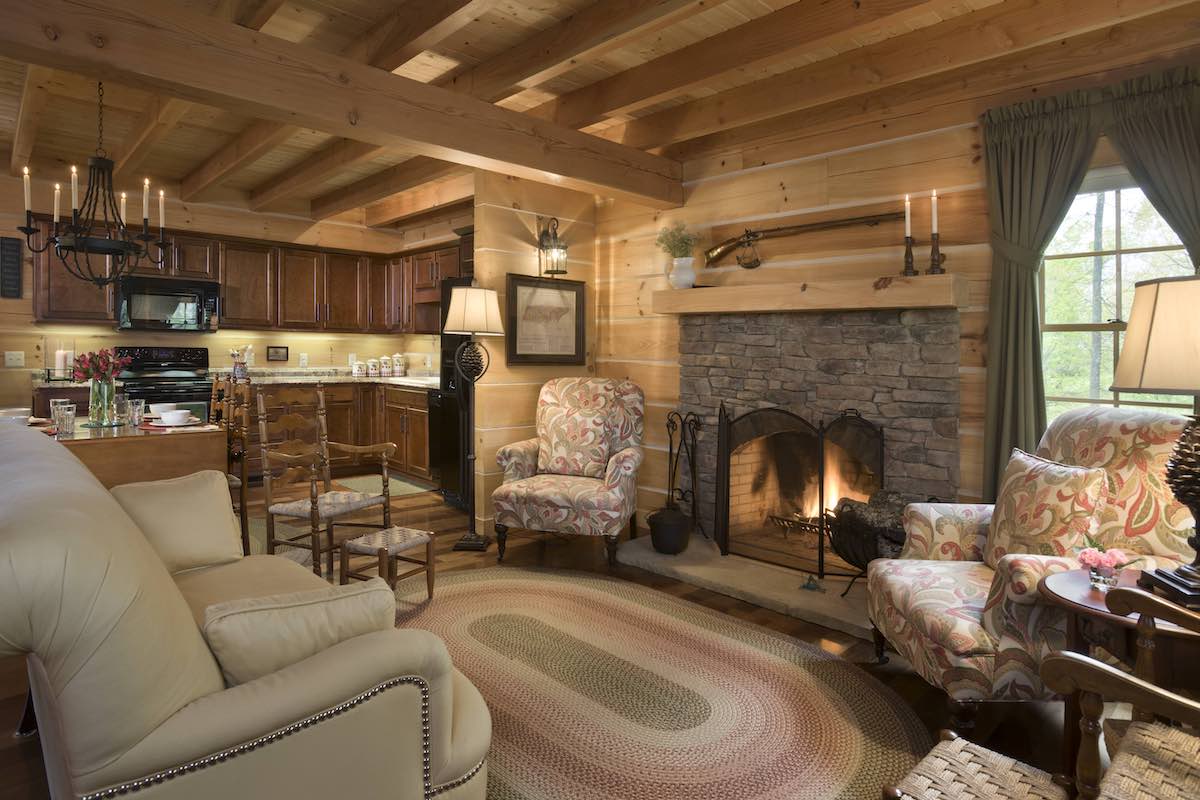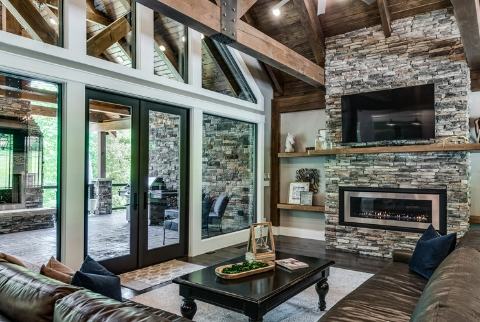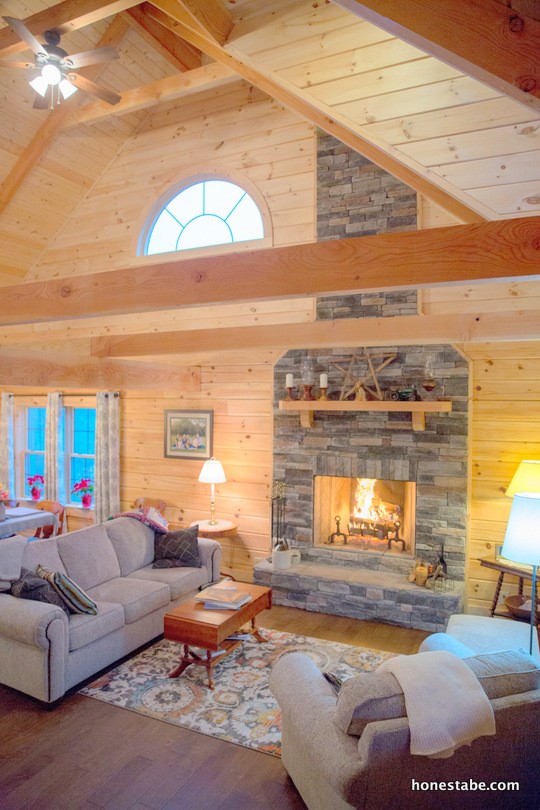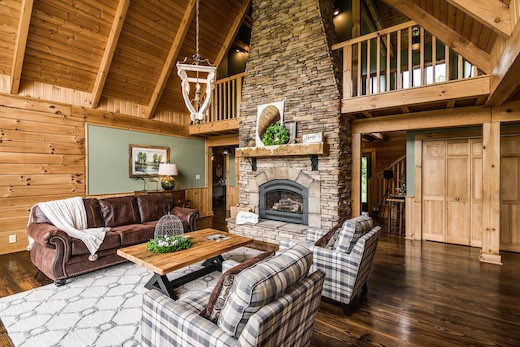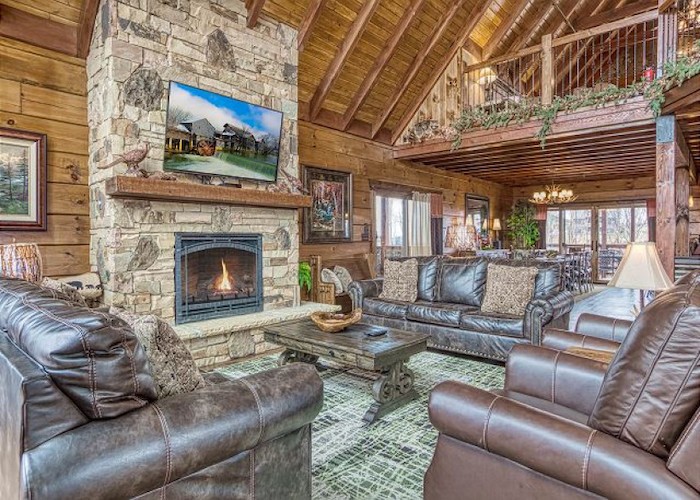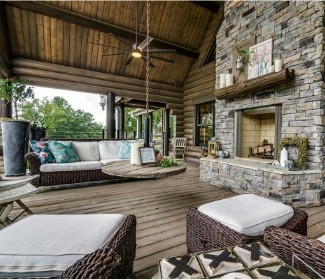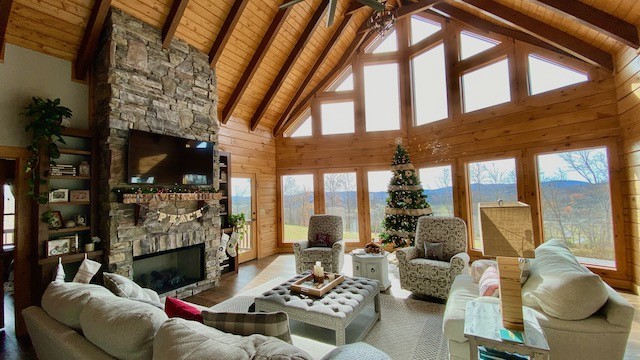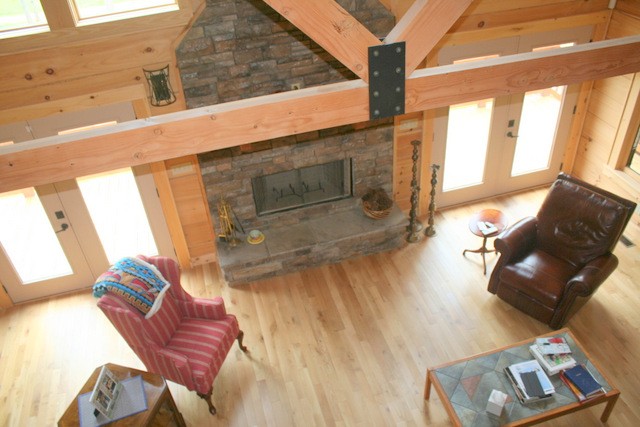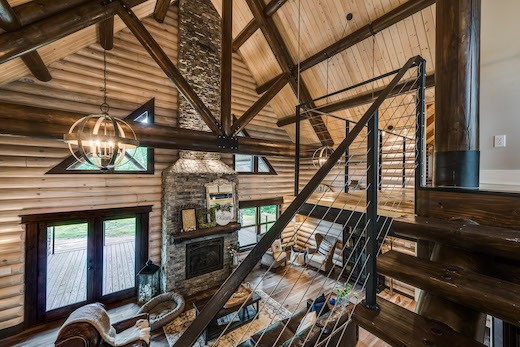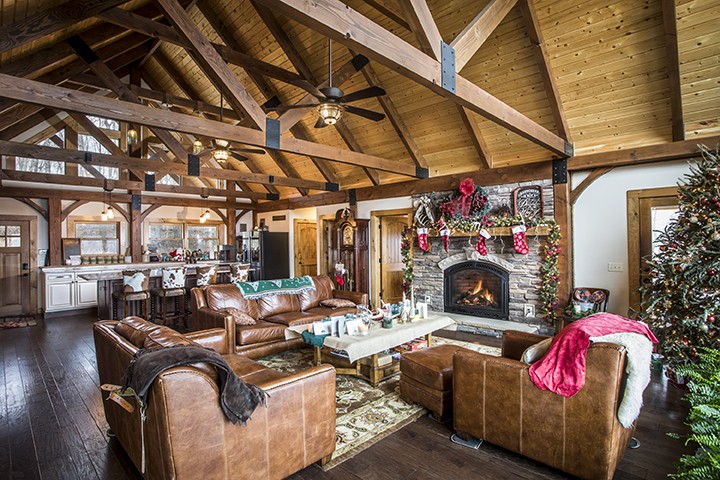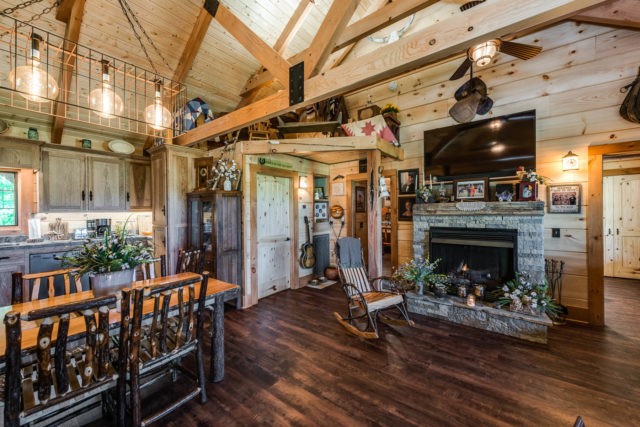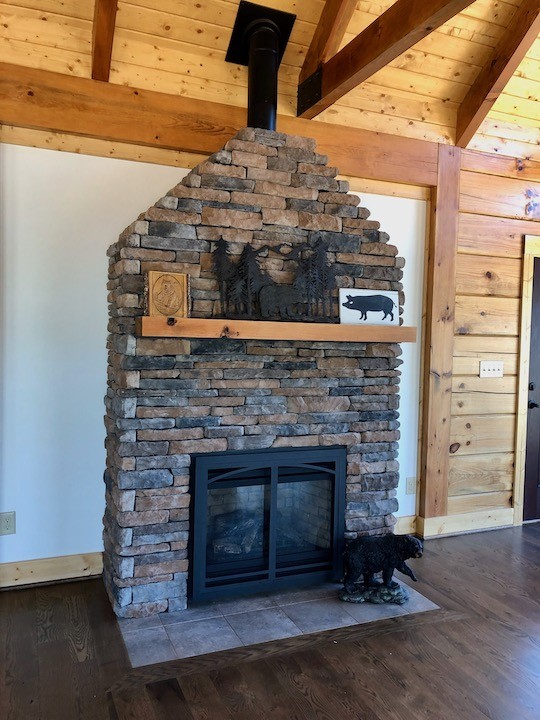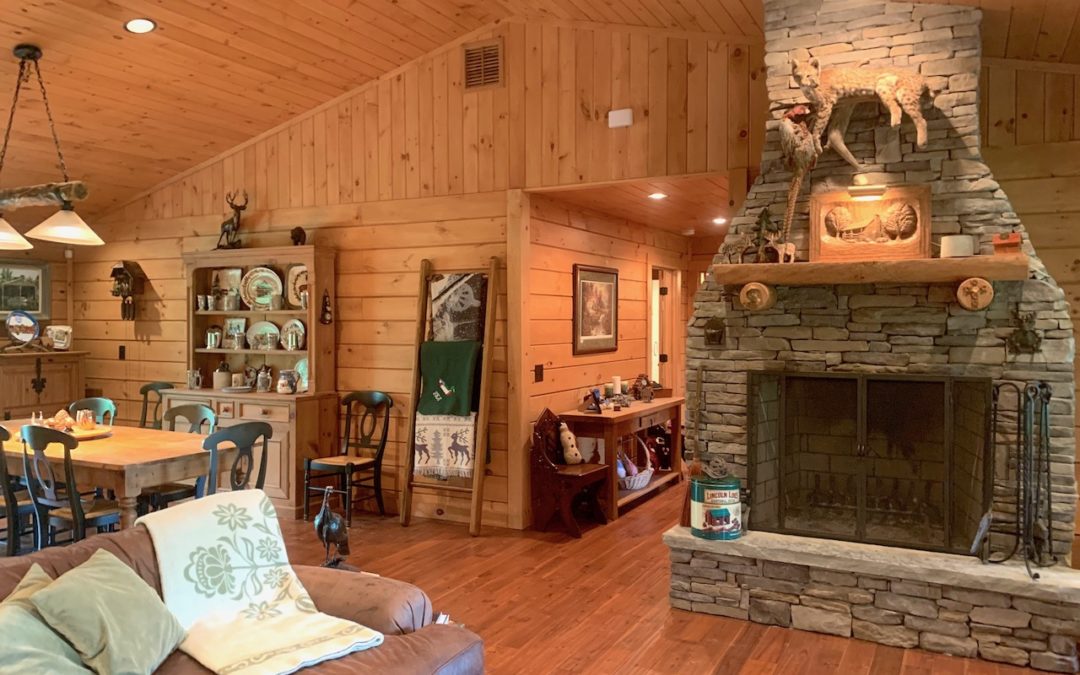Molly Cooper of Cooper & Co. Interior Design offers advice for planning a log home fireplace and presents a gallery below to show how several Honest Abe customers have designed their own fireplaces.
Q. How do you determine the right fireplace size for the room or outdoor space?
A. Scale is everything. Putting in a fireplace that is too small or too large is the worst look a room can have. In most every case the fireplace is the focal point of the room. Not getting the sizing right will make or break the look in the room. The bad thing on choosing a size for your fireplace is that there isn’t an exact measurement I can give you for a particular room size. You must take in to account not only room size but door and window locations, ceiling height, natural breaks in the walls or staircase placement. If you have a wall that the fireplace would look most “natural,” choose placement between two windows or beside an exterior door. Centering in the room always helps if you plan to take the fireplace facade all the way to the ceiling.
Q. What material choices are available?
A. When I say the choices in material and finishes are virtually endless, I am not far from the truth. The options have surely come a long way from the field stone once gathered from the land around a new home and stacked with mortar. Now we have brick, stone, faux stone, metal, concrete, stucco or plaster, and the list goes on. Choosing the material for your project will greatly depend on the rest of the home. Complimenting other materials will bring a design together.
Q. Are there any structural considerations for an interior fireplace?
A. Most fireplace built today are not structural. They are an “add-on” to the existing structure. In log homes especially a fireplace structure is a great way to run electrical up to the ceiling but are not necessary in the structural integrity of most designs. When building the structure, your contractor must build out to the specs according the firebox that is planned to be used for the space.
Q. Wood, pellet stove or gas fireplace?
A. The type of fireplace is completely up to the homeowner and their specific likes. There are definite pros and cons to each type and several options in each category.
Wood has the best warmth option in my opinion. Growing up, standing over the floor register where the heat from our basement wood stove came from was such a joy, and I have many memories racing to be the first there from being out on a cold day. I also have the “great” – insert eyeroll from my 10-year-old self – memory of going to cut and gather wood. I said I would never have a wood stove when I grew up, I have wished several times I had one now.
Gas offers a wonderfully clean burning stove, and you may choose vented or the popular ventless system.
Pellet stoves are a newer product to the market and what was once a pricy option, now with supply and demand becoming more of a norm and pellets being offered at more retailers, they are becoming widely available to homeowners.
Q. Who constructs the fireplace in your home?
Depending on your contractor he or she may be the one to construct it. However if the fireplace company you are purchasing through has specific needs and warranty specs, they too may offer the service of constructing exactly what they need for their firebox.
A. How to select a mantle that’s right for your taste and future use.
Once you have your finished look and are ready for the mantle and all the pretty things, again decide on a mantle material that will complement the room the fireplace. Use something that fits you and your homes personality. If you have a rustic feel to your home, try getting your hands on an old cut of log to mill down and use or even a new wood piece that is distressed to be made to look old. Whatever wins in the end, decorate your mantle with items whether it is stockings for Christmas or candle sticks and tulips in the spring, your mantle is a focal point, so make it beautiful.

